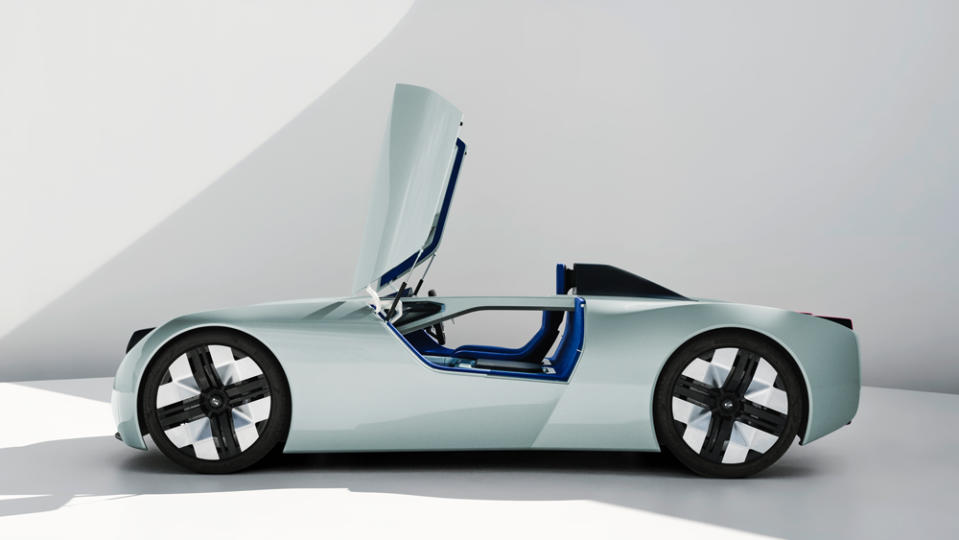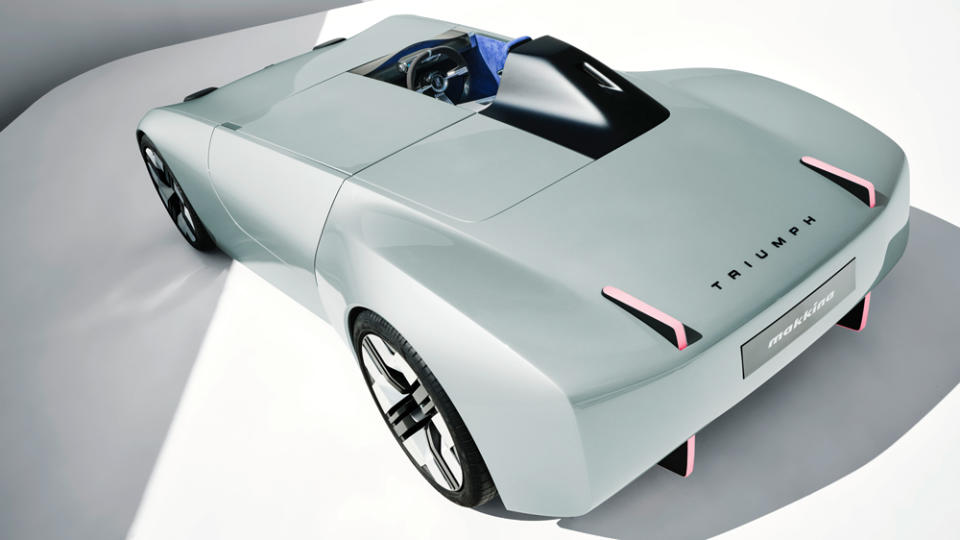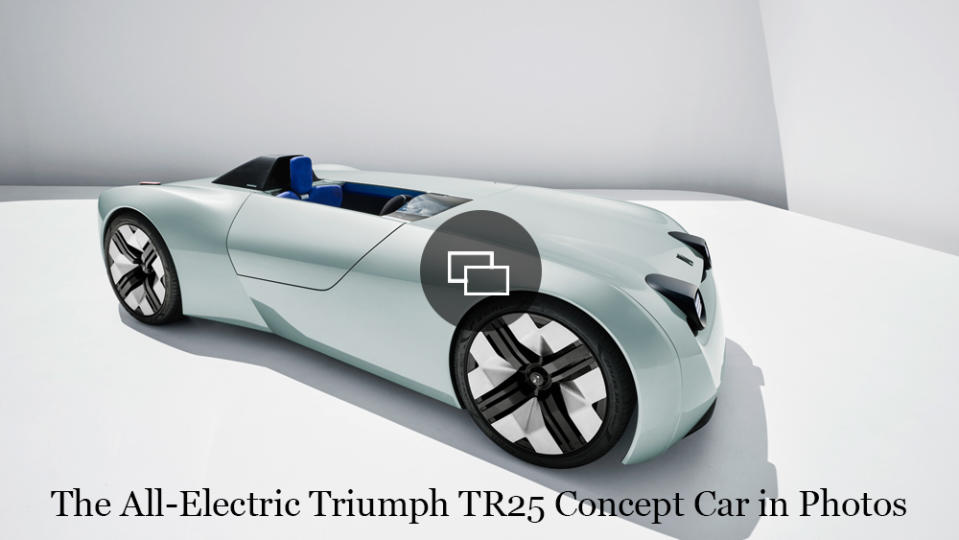Triumph Returns With a Bold All-Electric Sports Car Concept That Needs to Become a Reality

Triumph is one of the few British car companies to truly crack America’s consumer code. Throughout the 1950s and 1960s, its TR models battled with two-seat rivals from MG for the hearts and wallets of U.S. buyers. This was the golden age of British sports cars, but the heyday would come to a halt with Triumph’s withdrawal from the stateside market in 1981. By 1984, the brand had been retired altogether. Triumph’s last hurrah was a re-badged Honda sedan.
Yet here we are in 2023, witnessing the reveal of a new Triumph roadster. Built to celebrate the marque’s 100th anniversary, the electric, single-seat TR25 is manifestly a concept car—at least for now. However, it has the support of the BMW Group, which owns the Triumph Motor Company name and, lest we forget, has quite a track record (Mini, Rolls-Royce) for reviving British brands.
More from Robb Report
280,000 Teslas Are Being Investigated by the U.S. Over a Steering Issue
Porsche's New EV Charging Station in Germany Includes a Luxe Lounge for Drivers
Car of the Week: This Classic 1954 Oldsmobile Concept Could Fetch $3 Million at Auction

The TR25 was created by Makkina, an automotive design house based in London. Don’t recognize the name? Makkina usually works behind the scenes for automakers, its work covered by strict non-disclosure agreements. This is the firm’s first public-facing project, and also commemorates Makkina’s 25th anniversary (as reflected in the car’s nomenclature). In essence, the TR25 is what happens when car designers are let off the leash.
Inspiration for the project came from the classic Triumph TR2. Launched in 1953, it was the first TR (Triumph Roadster) model—and the first Triumph that America took to its heart. More specifically, the TR25 draws from the famous Jabbeke TR2, which broke the world production-car speed record that same year. Witnessed by numerous reporters and photographers, it reached 124.889 mph on Belgium’s Jabbeke highway.

To improve aerodynamics, the Jabbeke TR2 was converted into a single-seater by using a metal cockpit cover. The TR25’s chassis and body panels are made entirely from carbon fiber, but the vehicle shares the same layout as that of its predecessor to “emphasize the fact that this car is about pure driving pleasure,” according to the official announcement. Usefully, removing the top panel also reveals an additional flip-out jump seat, although it’s best suited to short folks and short journeys.
The TR25’s design combines the classic and the futuristic. Its bug-eyed headlamps and rounded fenders are obvious nods to the TR2, while its angular 21-inch alloy wheels, scissor doors, and aero-enhancing LED tail lamps are pure concept-car touches. The exposed-carbon rear buttress contains a reversing camera, and the car’s tiny fly screen is the only concession to weather protection. Better pack your sunglasses, then, or perhaps a pair of flying goggles.

Inside the cockpit—featuring a minimalist aesthetic defined by plenty of blue leather and unpainted metal—the reimagined Triumph seems focused on amplifying the drive experience. The driver’s seat is fixed but the steering wheel and pedals both slide, ensuring that even those over six feet in height can get comfortable. The gorgeous spoked steering wheel—with a self-centering dial—also references the Jabbeke TR2 and features a small digital binnacle positioned behind it. You’ll also find three toggle switches, used to select drive modes, mounted on the car’s central spine.

In contrast to the gruff, 2.0-liter four-cylinder engine in the TR2, Makkina’s roadster is fully electric. Its 42.2 kWh battery and rear-mounted electric motor are lifted straight from the BMW i3s, and its output of 181 hp is twice that of its classic forbear. A lean curb weight of 2,414 pounds (419 pounds lighter than the BMW) helps the car cover zero to 62 mph in 5.2 seconds. However, the TR25’s modest 115 mph maximum wouldn’t have broken any speed records in 1953, let alone today.
For Makkina founder and director Michael Ani, the BMW i3 was the perfect base for a back-to-basics roadster. Ani bought an i3 when the car was first launched at the 2013 Frankfurt Motor Show, and has been driving one ever since. “The i3s platform proves that driving an electric car can be fun,” he says. “The combination of instant torque, acceleration, agility, and silence is as compelling now as ever.”

The TR25 is a great showcase for Makkina’s design talents and a compelling vision for a sustainable and relatively affordable sports car. Whether that’s all it represents is unclear, although the Triumph name still resonates with plenty of auto enthusiasts on both sides of the Atlantic. We just hope that we get a chance to drive it.
Click here for more photos of the all-electric Triumph TR25 concept car.
Best of Robb Report
Sign up for Robb Report's Newsletter. For the latest news, follow us on Facebook, Twitter, and Instagram.



